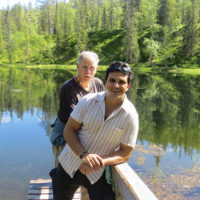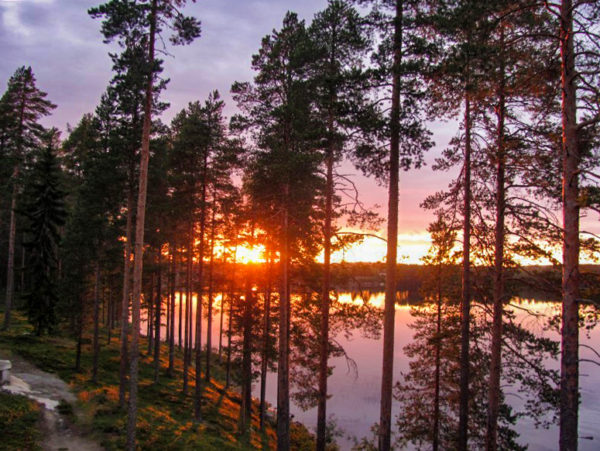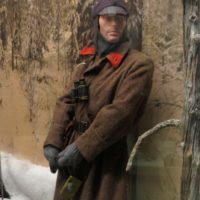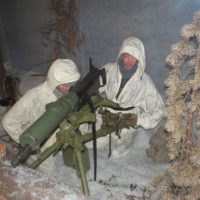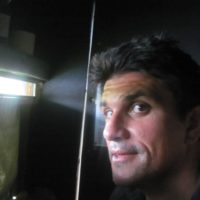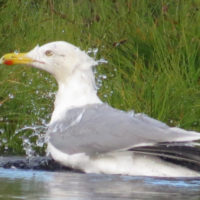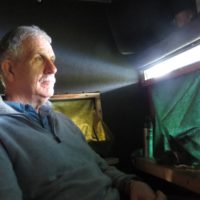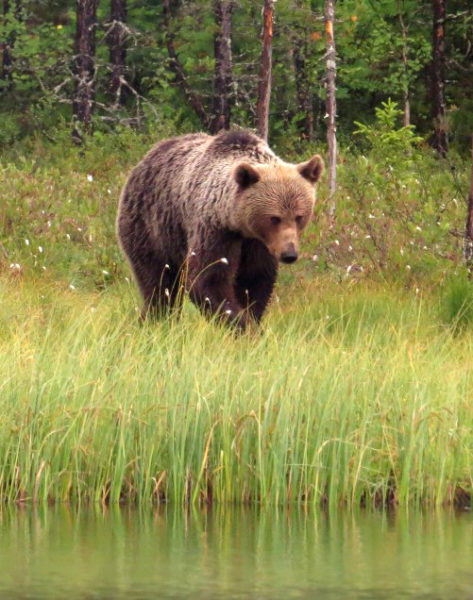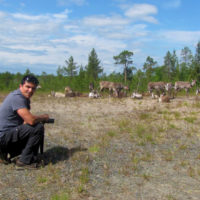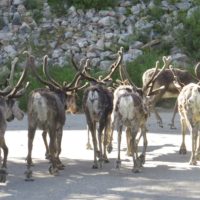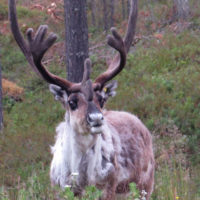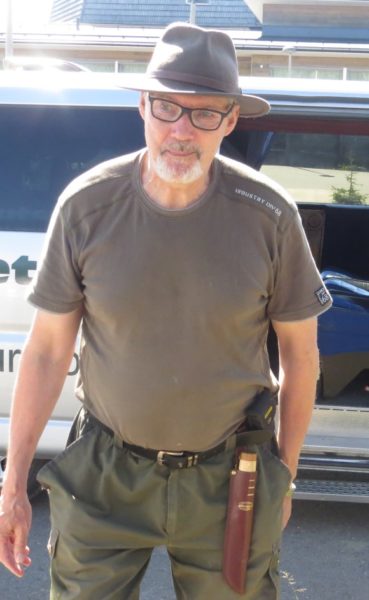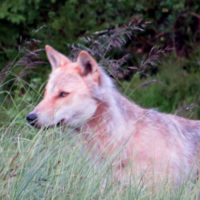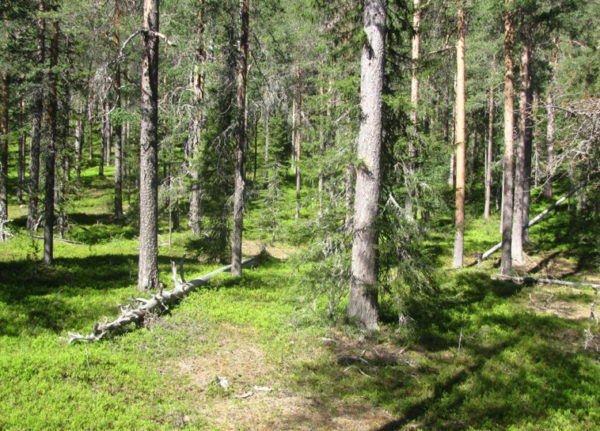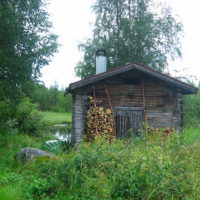Franzetti’s Creative Adventures; The Window to Scandinavia
- Yampu Tours
- Family Travel Give Back Initiative Natural Wonders Voluntourism Wildlife Interactions
- 40 Comments
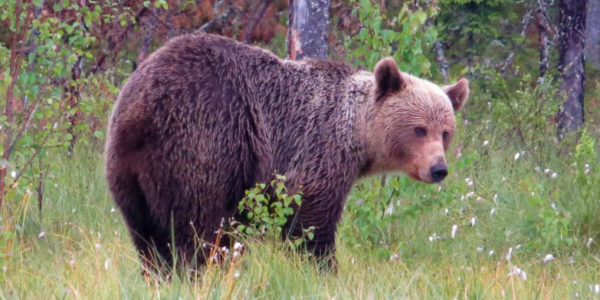
Joe and Paul Franzetti share their creative Adventures while opening the windows to Scandinavia.
True art is subjective. However, art is an expression of the artist to inspire viewers to look beyond the canvas in hopes that they will assimilate to the same raw emotions and experiences in which the piece represents. To achieve such momentous works, these creators search deep within themselves and at times, every corner of the globe…
From Iceland to Costa Rica, to the Middle East, to South America, one father son-duo leaves no stone unturned while creating pieces that not only benefits their viewers who live vicariously through their detailed creations but also those in need.
After a spontaneous visit to an Ecuadorian hospital for patients suffering from Hansen’s Disease (once known as Leprosy) Paul and Joe Franzetti decided to launch a purposeful mission to combine their passion for art and wildlife to call attention to the work of Sr. Anne Credido, the founder and caretaker of the hospital. Working together, detailed oil paintings and charcoal sketches transpire from their adventures, becoming a part of a stunning art calendar that is sold with all profits being donated to the same hospital they had visited, The Damien House.
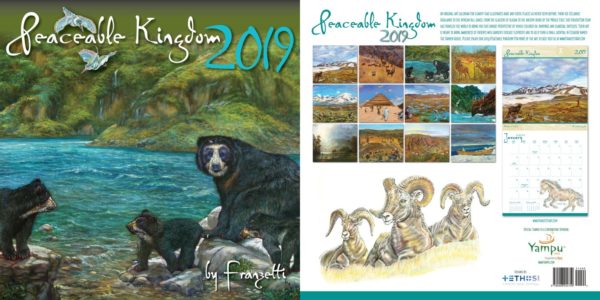
In July of 2018, Paul and Joe traveled to a new locale with Yampu Tours, Finland. They found not only the terrain and animals interesting, but also the Finnish people and their culture.
During their travels, Paul graciously shared detailed excerpts from his journal entries to bring readers in on the exciting experiences he and his son had during their trip.
The following are excerpts from Paul Franzetti’s journal. As Yampu’s second installment of Franzetti’s Creative Adventures, these entries will provide a “Window to Scandinavia”.
_____________________________________________________________________________________
According to an informative little booklet given to us by one of our informative guides, Finland 100 Facts, Finland is a country where…
- 89% of the Finns are blue-eyed, making Finland the most blue-eyed country in the world
- There are two official languages, Finnish and Swedish
- Finns love coffee so much they are the people with the largest consumption of coffee in the world—26.5 pounds per person per year!
- The Finns drink milk with every meal, no matter how old they get
- Finns hold the world’s record for per capita milk consumption—796.29 pounds per person per year
- There are 195,400 miles of coastline (distance equals 7.8 times around the world
- rye bread is the national food
- There are a hundred thousand more women than men in the country
- 47% of the Finns are unmarried; “Single” is the most common marital status
- 99% of the Finns can read, which makes Finland the most literate country in the world
- By 1952, Finland was the world’s only country that had paid its war reparations—226,500,000 in gold, in the form of ships and machinery
“Typical of Scandinavians”
Flight to Helsinki, 6:15 pm, losing a night of sleep and arriving at 8:15, Finland time. A thin, blond Finnish woman, a 30-year resident of NY, visiting her grandmother petitioned us for help loading her four, large, heavy bags on to her two carts: “Just had an operation. Oh, thank you. You are Americans. The baggage people told me they were too busy.” She gestured at the completely deserted claim area and dryly noted, “This doesn’t look busy, does it? Typical of Scandinavians. They don’t offer their help much.”
Hmmm, the first window on Finland opens.
Our livery driver met us, a large, bald, good-natured man with an electronic sign “Yampu” caught our attention. He took our bags, turned, and promptly collapsed over a passerby’s bag. “I am sorry, are you all right?” She said with due obligatory sympathy. He brushed off his suit and walked on, nicely containing his urge to call her some name in Finnish– 2nd window began to open.
In the car ride to our hotel, we plied the driver with questions about Lapland and he spit out some random facts, the basics—population, differences among Scandinavians; best Finnish movie (Unknown Soldier); popular foods; what makes Finns different (“Language,” he said, not grasping my slightly deeper interest.) “Lapland is flat,” he said. In Helsinki, winter freezes the rivers; people ski, skate on the ice. Then he went back to the Finnish character: “Shy and sentimental.”
Nature Picks Up Its Own Paintbrush
The Kalevala is a good lodge, not luxurious but spacious, clean, friendly, but not sporting many customers this Wednesday. A chance ride on bikes was a novelty. Afterward, we had dinner and homemade ice cream—the best I have ever had, something between the smell of the green forest, cream, mint, and the aroma of pine bark, which says little if anything.
We were about to go to sleep around 10:30 pm when I saw the trees out on the water glowing brown. Ah, the setting sun at last (it goes down for a few hours, then comes up like a buoy) The water seemed suddenly to roll in painted lines of reds, greys, greens and blues. Nature picked up its own paintbrush and let the sky daub its colors on top the moving watery canvas.
The Winter War Museum
We biked to the Winter War Museum, just a few yards up the road. The Museum is like so many similar small museums in various countries, that commemorate events of the hardships, honors, heroes and heroines. Pictures abounded of that 100 days war when Russia bled at the doorstep of Finland between November 1939 and January 1940.
One thing caught my attention: a worn map, slightly torn; heavily creased; taken from a dead Russian. The map showed where the Russian attacks were to be conducted– penciled markings of the five major attack points. This living document moved me. It was not a modern map, digitally blown up. It was more like a dinosaur bone, a relic, a piece of historical detritus.
It was taken, trophy-like, from the pocket of a fallen Russian who had entered
Finnish territory quite alive and in the hope of exiting alive. As a soldier in an army, in an act of aggression commanded by Stalin, who was sitting back in Moscow, plotting, as scripture says, “on his bed the destruction of the Innocent,” his map only guided into the underworld, instead served merely to aid his enemies.
One Night in a Bear Blind
“One Night in a Bear Blind” sounds exotic, a tad daring, if you are a tourist, but if you are a Finn living on the Russian border in that vast forest and lake region (known as the taiga, sitting up in an 8’X6’ hut, with a small strip of window opening out on that canvas of wilderness, it is prosaic. It is, after all, home to them. Nevertheless, there we were with our cameras in hand, waiting and watching for fifteen hours in our patch of northern, forested earth, for brown bear, wolf, and wolverine. There we sat, waiting for wild animals to visit our slice of a Finnish nature diorama.
It is Remoteness Personified. The Idea of the remote is what drove me to come to this country of remoteness adjacent to remoteness.
It’s unlike the grandeur of the Canadian Rockies, where splendor overwhelms the eye. Here, the pine forests merely inundate the nose, do not force the eye upwards. Everything is scrubbed fresh and sap green, like Eden on Day 5 of Creation. The trees near the lake are bare, vertical blinds opening up just enough for you to see more green-gray pines. The miniature lake flowed in constant, small waves, that rushed headlong into the shore, making the water lilies bump, but curiously remain in the same place. The ducks never stopped their paddling. This same duck family of eight never got caught in a duck traffic jam. One got annoyed at the gulls and, in a fit, flew in pursuit of the squawking giant.
Gulls were there scavenging, since the wildlife guides put scraps of food around to ensure bear traffic, and consequently, human traffic; the former being the bait themselves, the latter being the gift- bears of money. In short, symbiotic survival.
Between 7 and 10:30 pm, four bears came separately to forage by the water’s edge. At any distance, a six or seven-hundred-pound bear makes quite an entry. The bear is king here, followed by the wolf, the moose, the wolverine, and the reindeer. The lynx (Finland’s only feline) is considered the most beautiful denizen of the taiga, but the lynx is not to be seen by the casual tourist.
Finland is Where Pine Trees Come to Die
On July 8 Jukka [yooh kah) a 40-year-old Finn, a congenial, pleasant- mannered and patient driver, arrived at 9 and drove us north to our first National park, Oulanka (pronounced “oh lanka”). On the way, the reindeer increased; they grazed by the highway, loped along, even on the highway, but on either side of the road, endless swaths of pine trees. Finland is where pine trees come to die. For dying pine trees, the priest reminds them that they will go to Finland after death and live forever among lakes and poplars.
Eero Fisk, the Classic Finn
Into Lapland but not into the lap of luxury. Trees and more trees. Angels practicing drawing fancy trees start in Finland working on straight lines.
Eero Fisk says, “Holkyn Kolkyn” (pronounced something like “hurlkelin kirkelin”) means something like “Cheers,” but the best rendering, as our guide Eero Fisk used it, is “You’re in the right place, where you want to be.”
Eero Fisk, our guide in Pyha-Luosto National Park, spent five hours with us, pointing out elements of nature, wrested from his long life in the wilderness. He is my age, large boned, and of a type I’ve seen before, a classic Fin. (Just like the men who stopped Russia cold in its bloody tracks in 1939 and kept Finland free from Communism ever after.). He is resourceful, hardy; self-reliant, prepared-for-outdoor living; skillful, loving-but-respecting-his environment of twenty-two billion trees. His backpack weighed sixty kilos; he sported a hunting knife; a safari hat; outdoor gear; and sported an encyclopedic command of tree facts, rock facts, water facts, and animal facts:
“When approached by a wolf,” he says, “Stand high, lift up your hands, look him in the eye: ‘I’m taller and stronger than you are!’ But with a brown bear, don’t move toward him. Don’t look him in the eyes, look down. Keep your left foot slightly less forward; don’t turn your back, don’t run; very slowly back away. If he charges, lie down face forward, your hands over your neck. He may bite your arms or sniff you. Remain down until he leaves.”
“That bent tree pointing north,“ he says. “The Sami people believe that if you pass under it three times, you will come back as a bear in the next.”
Joe pointed to another bent tree, “Like that one?”
“No, it is not pointing north but south.”
The Sami are the original Laplanders and Eero spoke about their discoveries, like the Norwegian spruce that has penicillin, which he
explained how to obtain and how to prepare it. He spoke of the various problems of determining whether or not the water could be drunk. “Look for hairs—dead animals can’t drink…. Forest turf is the best filter for water… That rock, the one with the ripples was made by a glacier…”
The forest was his bailiwick. From a high point, he gestured, “Look over this land” and moved his hand from one place to the next: “There is not one place I have not been.” (Julius Caesar could not have been more proud of his conquests in Gaul, his travels, his political triumphs than was Eero of his wilderness. His multitudinous
roaming had provided him with encounters expected of such an occupation. He had seen a golden eagle hovering over his dog; a wolverine scampering passed him; bears on the trail; had killed a viper. He gave short but sincere presentations on ferns and the age of trees; the effects of the last Ice Age on quartz. In short, he looked, spoke, and acted the Forest Expert, a forest ranger, a backwoods pioneer; a son of the earth; a type of rustic entrepreneur. He was a “manly man”.
You May Leave Lapland, but Lapland will Never Leave You.
As we walked between the grey boulder slides on both sides, cedars athwart the fern-tilted earth, I saw dead pines artistically stretched below living ones. For Art’s purposes, every whitened root of these fallen forest heroes that rotted among the herbage was a potential occupant of a future painted remembrance: the dead trees with their curled limbs, standing back to back with healthy brown trees, their twisted limbs sprouting forth from green pine leaves—made a mighty impression on the eye; however, what cannot be painted is the aroma that suffuses the atmosphere.
We gave him 100 euros. He was clearly moved. He spoke a compliment, then looked at me, face to face, and pronounced with a poetic, serious, but gentle manner, “You may leave Lapland, but Lapland will never leave you.”
“Win or Die”
According to Finland 100 Facts, “The Finns had their first sauna in the Bronze Age (1500-900 BC)”
On route to the north and into the Arctic Circle, Jukka told us about the Championship of Sauna. * In 2010, there was a naked Finn who burned over 80% of his body and lay in a coma for a few days but who won the championship. And his opponent was a dead, naked Russian.
“Win or die.” said Jukka proudly, but with a wink in his voice, “that’s the kind of competition we have here.”
[A little back research here: “The annual sauna world championship in Finland was called off –after only twelve years in existence after a Russian man died after spending six minutes enduring a temperature of 110C. Vladimir Ladyzhenskiy was pronounced dead after being dragged from the sauna by judges. Timo Kaukonen from Finland was the winner but had to be pulled out and treated for burns.]
It was our last window on Finland. But I will end with a footnote, of sorts…
The Sauna.
“Sauna” [pronounced “sowna”] is a Finn word, a Finn invention, a Finn cure-all to aid health. It reduces blood pressure; reduces anxiety; releases some chemical or other. The Finnish saying is this: “If a sick person is not cured by tar, spirits [alcohol] or sauna, then they will die.”
From Finland 100 Facts.
- In the sauna, one must conduct himself as one would in church
- The sauna is a poor man’s pharmacy
- A woman looks her most beautiful after the sauna
- All men are created equal, but nowhere more so than in a sauna
- A house without a sauna is not a home
………………………..…………………………………………………………………………………………………………………………..
Stay in Touch: Sign Up for the Yampu Tours Newsletter and be on the lookout for the duo’s next feature of “Franzetti’s Creative Adventures”!
Tags:

